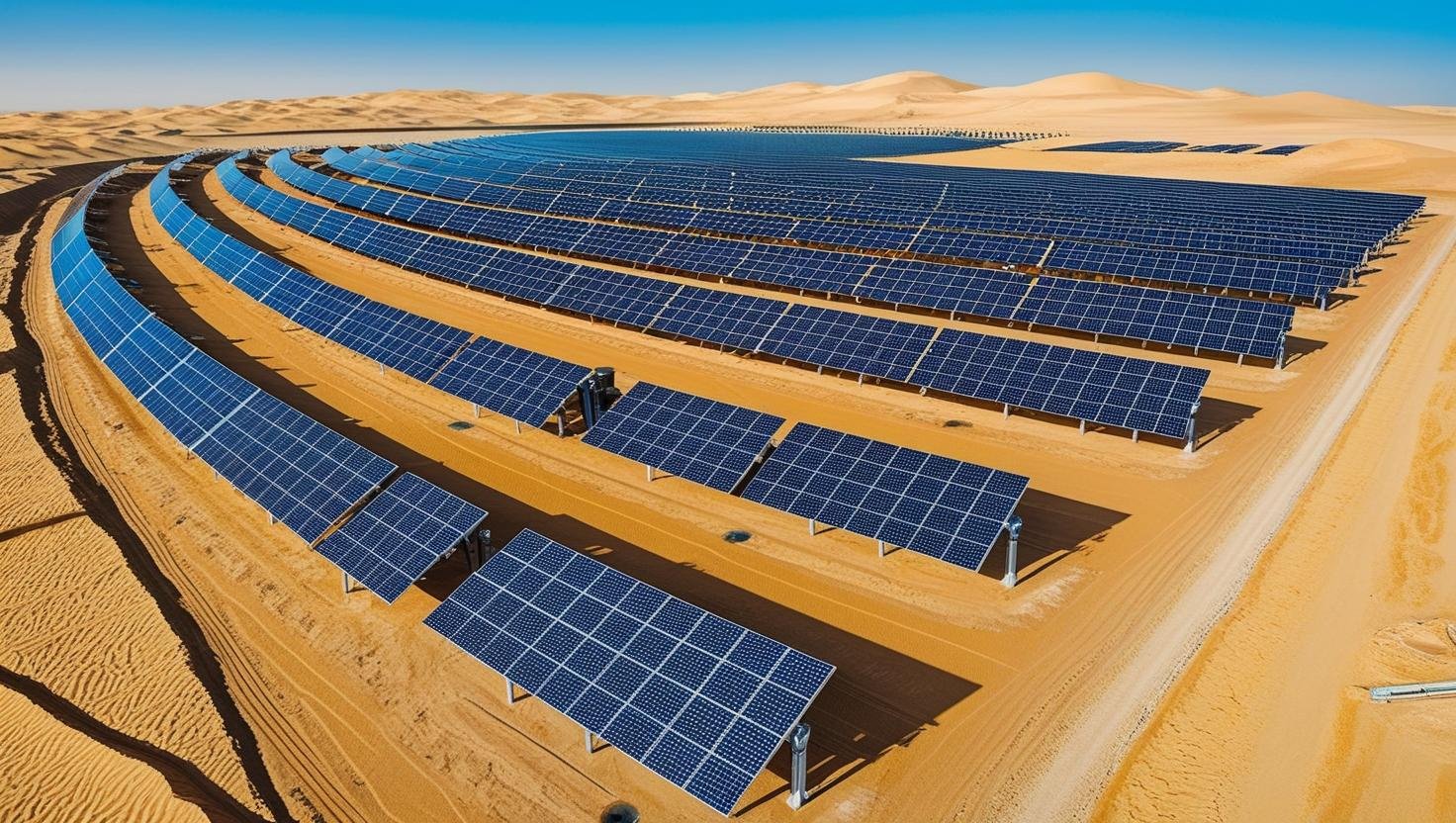Understanding Industrial Solar Energy Systems
Industrial solar energy systems refer to large-scale solar technology implementations tailored for commercial use. Comprised primarily of photovoltaic (PV) panels or concentrated solar power (CSP) systems, these installations convert sunlight into electricity, a process that can significantly reduce energy costs and carbon footprints for businesses. The key components of a typical photovoltaic system include solar panels, inverters, mounting structures, and performance monitoring systems. Conversely, concentrated solar power systems utilize mirrors or lenses to focus sunlight onto a small area, generating heat that can be converted into electricity.
These solar solutions can be configured in various ways to suit the specific needs of industrial facilities. For instance, rooftop PV systems are popular for factories and warehouses, allowing companies to utilize otherwise unused space. Ground-mounted systems are another viable option, particularly for large enterprises with sufficient land to install expansive solar farms. Both configurations can be tailored based on energy needs, making scaling up or down easy, depending on operational requirements.
A significant advantage of industrial solar energy systems lies in their scalability. Businesses can start with smaller systems and expand over time, accommodating growth without excessive capital investment. Moreover, hybrid systems that combine solar power with other renewable energy sources, such as wind or storage technologies, can further enhance resilience and energy independence.
The application of these solar technologies in industrial settings is diverse, ranging from powering production lines to providing clean energy for heating processes. As organizations increasingly recognize the importance of sustainable practices, the adoption of solar energy solutions is becoming indispensable. By understanding the mechanics and configurations of industrial solar energy systems, businesses can make informed decisions about integrating solar technology into their operations, driving both sustainability and efficiency.
The Economic Benefits of Implementing Solar Energy in Industries
Adopting industrial solar energy systems presents numerous financial advantages for businesses striving to reduce operating costs and enhance sustainability. One of the primary benefits is the significant reduction in energy bills. By generating their electricity, companies can lower monthly energy expenses, leading to substantial savings over time. As energy prices continue to rise, the potential for cost savings through solar energy becomes increasingly attractive.
In addition to operational savings, the long-term return on investment (ROI) associated with solar systems is notable. Although the initial investment required for solar installation can be substantial, businesses often recoup these costs within a few years due to decreased energy expenses. After reaching the payback period, firms can enjoy nearly-free electricity for decades, resulting in a favorable ROI that enhances overall financial performance.
Moreover, potential tax incentives and rebates can further improve the economic feasibility of solar investments. Government programs often offer financial benefits to organizations that embrace renewable energy sources. These include federal investment tax credits (ITC), which significantly reduce the upfront costs of installing solar technology. Additionally, businesses can benefit from depreciation on solar systems, allowing for further tax efficiency as they write off the cost of the systems over time.
Financing options also play a crucial role in the adoption of solar energy. Many companies may opt for power purchase agreements (PPAs) or leasing arrangements, allowing them to install solar systems with little to no upfront cost. Under these agreements, a third party typically finances the solar installation, and the business pays for the energy produced at a lower rate than their previous electricity costs.
Real-world examples of companies that have successfully implemented solar energy systems underscore these advantages. For instance, a manufacturing firm that transitioned to solar energy reported a dramatic decrease in its energy bills, enhancing its competitive edge and allowing reinvestment into other critical areas of the business. Such case studies illustrate that with proper planning and investment, industrial solar energy systems can drive both environmental and economic benefits.
Mitigating Environmental Impact: How Solar Energy Reduces Business Footprints
The transition to industrial solar energy systems represents a significant stride towards minimizing the carbon footprint of businesses across various sectors. Traditional energy sources, such as fossil fuels, emit high levels of greenhouse gases and pollutants, contributing to climate change and environmental degradation. In contrast, solar energy offers a clean, renewable alternative that significantly reduces harmful emissions. By harnessing the power of the sun, businesses can dramatically lower their reliance on nonrenewable resources, thus playing a crucial role in mitigating climate change impacts.
Implementing solar panels not only addresses immediate energy needs but also aligns with broader corporate sustainability goals. Companies that utilize solar energy systems often find that they can enhance their reputation among stakeholders, including customers, investors, and the communities in which they operate. Adopting renewable energy sources positions these organizations as leaders in environmental stewardship, demonstrating a commitment to sustainable practices. This positive image can differentiate a company in a competitive market increasingly focused on sustainability.
To effectively measure the environmental benefits of solar energy, businesses should establish clear metrics for evaluating their progress. This may include tracking reductions in carbon emissions, energy consumption data, and financial savings achieved through solar energy adoption. Regularly reporting these findings can bolster transparency and accountability, allowing companies to showcase their contributions towards sustainability. Moreover, engaging with external certifications or sustainability initiatives can further validate these efforts, creating a more robust narrative around a company’s commitment to reducing its ecological footprint.
In essence, venturing into solar energy not only serves to lessen environmental impact but also propels businesses toward their sustainability aspirations and strengthens their public image. As more organizations recognize the virtues of solar energy systems, we can anticipate a collective movement towards a more sustainable and environmentally conscious business landscape.
Future Trends: Innovations in Industrial Solar Technology and Grid Integration
The industrial landscape is undergoing a transformative shift towards sustainability, driven significantly by advancements in solar energy systems. One of the most notable trends is the improvement in solar panel efficiency, which is critical for maximizing energy output while minimizing space requirements. Next-generation solar panels utilize innovative materials, such as perovskites, which promise higher efficiencies and lower production costs compared to traditional silicon-based panels. This increase in efficiency enhances the overall viability of solar energy as a primary power source for industrial applications.
Another emerging area of interest is battery storage solutions, which are essential for addressing the intermittent nature of solar energy. Advanced battery technologies, including lithium-ion and solid-state batteries, enable businesses to store excess energy generated during peak sunlight hours. This stored energy can be deployed during non-productive periods, thus ensuring a consistent power supply. Moreover, the integration of energy management systems can optimize energy consumption and reduce dependency on non-renewable sources, further solidifying the role of solar energy in industrial operations.
The concept of smart grids is also gaining traction within the industrial solar energy sector. Smart grids utilize digital technology to monitor and manage the transportation of electricity from all generation sources, including solar power. This infrastructure provides real-time data on energy consumption and generation, facilitating more efficient distribution and utilization of energy resources across the grid. The collaborative efforts between industrial entities and electric utilities can pave the way for enhanced grid reliability and higher utilization of renewable energy sources.
As we look to the future, the potential for innovative developments in industrial solar energy systems is substantial. The advancements in solar technology, coupled with effective grid integration strategies, signal a new era of energy production that aligns with sustainability goals. Such innovations not only stand to increase energy independence for businesses but also contribute significantly to reducing carbon footprints across various industries.






اترك تعليقاً